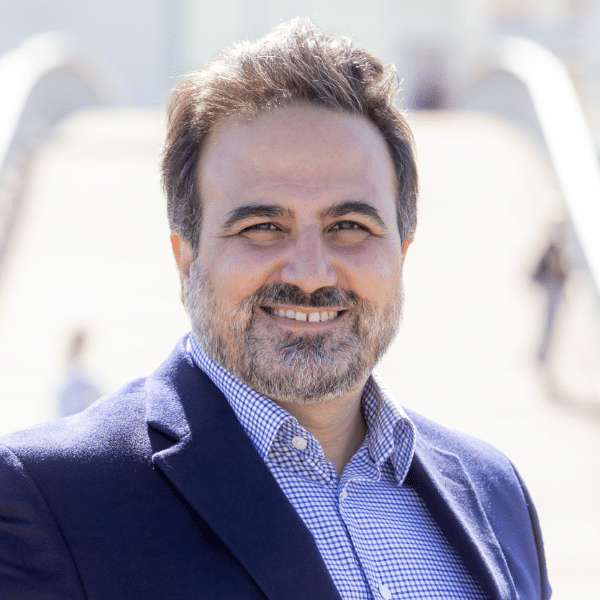How VCs Help Founders Optimize Seed & Series A Funding Rounds

Most startups’ funding rounds fail because Founders ask Investors for too much money too early. Sizing the funding ask inappropriately can lead to a myriad of challenges, from wasted time during the fundraising process to the dilution of Founders’ equity at an early stage, not securing term sheets from Investors, and setting unrealistic expectations among Venture Capitalists. These pitfalls not only hamper a startup’s immediate financial health but can also significantly derail its long-term growth trajectory.
In this post and the companion webinar, I review the methodology VCs use to optimize seed and series A funding rounds: defining milestones based on the startup’s development stage, focusing on tasks that create 2x value compared to the current round, and tranching the investment based on these milestones and tasks.
In This Post
- The Perils of Oversized Funding Rounds
- Wasting Time During The Fundraising Process
- Not Getting Term Sheets From Investors
- Oversized Funding Rounds Negatively Impact Dilution and Valuation
- Raising VC Expectations Too High
- How Venture Capitalists Determine the Appropriate Size of Funding Rounds
- Conclusion: tl;dr
Accelerate Your Learning: Watch Our Webinar!
Don’t just read about it, immerse yourself in the content through our companion webinar for this post! Engage with a multimedia presentation, discover all the referenced sources, and have your questions answered live! Click the “Watch Now” button to access the webinar. (Members: click here).

The Perils of Oversized Funding Rounds
“Why not ask as much as I want?” is a question I often get asked during training and live webinars. While the current market conditions have made Founders more prudent in their ask, the last decade gave the wrong impression that any project gets funding.
Founders are also notoriously bad at estimating how much money they need to get to the next phase of their startup’s development path. They often size their funding rounds based on internal constraints (“I don’t want to be raising money every 6 months”) or external data such as a competitor’s recent raise. Since they seldom understand how VCs make investment decisions, entrepreneurs fail to size their funding rounds appropriately. I tackled the main VC investment criteria in the post below.
I’m not saying that Investors always make sensible investment decisions. In fact, they get it wrong more often than they get it right. That’s the nature of the game. But it doesn’t mean they throw money out the door in a “spray-and-pray” strategy. Experienced VCs follow a disciplined approach when deciding how much financing a startup needs.
The question Founders should ask is not “How much can I raise?” but “How much should I raise?”. Asking for too much money typically leads to a string of potential funding round killers. I always start my training sessions by making Founders aware of this crucial point, which unfortunately does not often get mentioned.
The primary pitfalls of asking too much money from VCs are the following:
- Wasting time during the fundraising process
- Not getting term sheets from Investors
- Diluting the Founders’ equity stake too early
- Raising VC expectations too high
Let’s go over these points separately with real-life examples.
Wasting Time During The Fundraising Process
Experienced Venture Capitalists are experts at sizing the appropriate size of funding rounds. As I explain later in this post and detail in the webinar, they calculate an optimal amount mainly based on the startup’s development stage and growth plan.
Most early-stage VCs lost money in overcapitalized startups that had not yet reached product-market fit (PMF). The spectacular failure of Quibi, the short-form content app that raised $1.8 billion before folding a few months after launching, was a stark reminder that iteration, not money, gets startups to PMF—a notion I tackled in the article below.

Showing up at a VC meeting with a fundraising amount that is way too high will automatically categorize Founders in a “They don’t know what they’re talking about” bucket with bad deals made previously. The signal the VC receives is that the entrepreneur is inexperienced in growing companies, not capital efficient, and borderline delusional. Most Investors will move on to the next investment opportunity.
VCs are incentivized to pump a lot of money into startups—a concept known as “narrow but deep” detailed in the webinar—but that generally happens after the company reaches product/market fit. By the time they realized their mistake on the oversized funding amount, Founders spent weeks, if not months, meeting with potential Investors who would reject them.
As I mentioned further below, there is a lost opportunity dimension. Some of those Investors would have been open to investing a more reasonable amount. When Founders go back to them a few months later with an ask that is more in line with their development stage, they send a negative signal on the strength of their fundraising process.
Most Founders realize too late that protracted funding rounds carry a cost. The hidden cost on Founders’ mental health of being repeatedly turned down by Investors is often more taxing than not raising money and having to make do without external financing.
Unlike customers, Investors often pass judgment on the company, its Founders, the market, and the product. I’ve met many Founders over the years who take these repeated comments—Founders take 60 to 90 meetings to raise a seed round—at heart, to the point of ruining their mental equilibrium.
I’ve been studying entrepreneurs’ stress and mental health for years as part of an academic research project and realized how damaging this dynamic can be. Although most entrepreneurs are equipped with tenacity levels rarely seen in many other professions, they get disheartened at times. I wrote the following article to help Founders fight off mental health issues.

Go Further: Entrepreneurs’ Mental Health: 5 Ways To Preserve It (Backed by Psychologists)
Not Getting Term Sheets From Investors
The potential consequence of asking for too much money is to fail to raise any money at all. The dynamic is pernicious, and I’ll illustrate it by describing the particular case of a company I advised over a decade ago.
After some cash injection from its Founders, two longstanding banking and consulting executives, I helped “Fintech X” raised one million dollars with Angels—which was not as common in 2011 as it is today—to build a more robust solution and finance a few projects with potential clients.
Comforted by their early traction, the Founders hired a fundraising firm for their next equity raise: 10 million dollars. The number seemed astronomical to me. As I mentioned in the webinar, it is rare for a startup to “skip a round” after receiving too much VC money too early.
The lie that a lot of Founders who raise too much money tell themselves is that they’ll skip a round. Noone skips a round.
Ryan DeneHy – Electric (Source: 20VC)
Most startups follow a gradual growth path, and product-market fit (PMF) is their first meaningful milestone. Fintech X was nowhere near PMF. Initial efforts building its acceptance network was promising, as customers could pay in a few dozen points of sales, but the company was still figuring out who to sell to, how much to sell it for, and how to sell it (which is my short definition of PMF).
One thing I learned these past 15 years is that, as Twitch.com’s co-Founder Justin Kan put it, you can’t buy your way to product-market fit. The trial-and-error phase that virtually all startups go through needs time and thought, not more funds.
What happened to Fintech X is textbook:
- The Founders and their fundraising firm spent seven months meeting with potential Investors, some of whom were interested in putting money but thought the 10 million dollar ask was too high
- When they went back to the same VC firms after readjusting their fundraising ask to 3 million dollars, they were met with skepticism. Nobody wants to invest in a company that’s been unsuccessfully trying to raise money for so long
- Meanwhile, they burnt through their cash pile. The Founders were so busy raising funds that they did not spend enough time talking to commercial prospects and getting more traction
- With one month of runway left, Fintech X organized a fire sale to a prominent industry player. One year later, all the employees had left the company
This dynamic occurs much more frequently than Founders think. The media only celebrate funding efforts than go through, and Founders who fail to raise money rarely advertise it on social media. Founders are are lulled into a false impression that Venture Capitalists are avidly awaiting their pitch deck.
Nothing could be further from the truth. Raising money with Investors is a long, arduous process. VCs turn down 95% of their incoming deal flow. I discuss the VC deal flow funnel in the article below.
Here’s my litmus test when I talk to Founders who struggle to size their funding rounds. I ask them: “How have you planned to spend all this money meaningfully in the next 18-24 months?” The determining word here is “meaningfully”.
Founders tend to spend money in the wrong places. Until they reach product-market fit, there is no need to spend lavish sums on people, social ads, or even the tech platform. At an early stage, capital is scarce and must be deployed where it matters most: to generate traction.
In the webinar, I show how oversized funding rounds often reflect Founders’ overconfidence and hint at a fear of failure that does not lead to success in entrepreneurship, which is often based on making mistakes and then correcting them.
Oversized Funding Rounds Negatively Impact Dilution and Valuation
Some Founders excel at convincing Investors to write large checks in oversized funding rounds. Bull markets like the 2013-2021 upcycle are also conducive to new entrants making unreasonable bets in the hope of securing “unicorn real estate.”
The iconic phrase in finance to describe these situations is: “There is too much money chasing too few deals.” It is one of the surest signs of a bubble. The two main consequences are too much dilution or valuation.
Too Much Dilution
Founders should not obsess over their dilution: if they decide they need money to grow, they will dilute their equity position over time. However, raising too much too soon may have unintended consequences.
The first reason is that raising in two steps will protect their ownership. Instead of raising, say, $2.5 million now, Founders could take $1.5 million to get to the next growth stage, then raise $3-4 million to accelerate. The second funding will be done at a higher valuation because the first funding helped de-risk the startup’s growth trajectory and get more data on customers, markets, and the team’s ability to execute.
Another consequence of raising too fast is that Investors in future rounds are very sensitive to Founders’ equity stake in the company. Most VCs view the “skin in the game” as a proxy for how hard the Founders will work at making (them) money when the going gets tough. They will pass on the deal if the Founders are too diluted too early.
Too Much Value
There is another dynamic at play when startups raise oversized funding rounds.
Many Founders counter-balance the potential dilution with a higher valuation, either in the current round or the next round. I’ll go back to “Fintech X” to illustrate this point. Because of the $10 million funding ask, Founders put an astronomical $40 million price tag on the company, four times higher than the Angel round that took place a few months earlier. Traction did not justify such a valuation uptick.
Acting so comes from a typical misconception. Many Founders wrongly believe they control their startup’s valuation. They don’t. The market does. What they should do is be as capital-efficient as possible and bootstrap until they get enough traction to command a higher valuation.
The #1 way to raise money from VCs and Angel Investors is to build good enough business that they all come to you.
Gary Vaynerchuk – VAynermedia (Source: Youtube)
In a video that I mentioned in the webinar, famed Angel Gary Vaynerchuk declares that building a profitable business is the best way to dictate terms when Investors come knocking at the door. Instead of wasting time raising too much money too early, entrepreneurs would be better off focusing on commercial traction and building a lasting company.
Raising VC Expectations Too High
This last point may seem counter-intuitive to Founders who went through a decade of unicorn minting believing higher valuations are better.
Venture Capitalists high-fiving each other over lofty valuations are existing shareholders, not new entrants in the startup’s equity base. The method most Venture Capital firms use to value their portfolios is predicated on successive funding rounds at ever-increasing share prices.
The phenomenon has overheated so much in recent years, as new players entered the Venture Capital asset class, that it has been called a Ponzi scheme by prominent Investors. I detailed this phenomenon in the article below.

Go Further: Venture Capital Returns: True Lies?
VCs investing in a company for the first time will see a high valuation as a source of stress, as it will require a tremendous exit price to make the deal attractive for them.
Let’s take an example:
- VC Firm X invests $2 million in Startup Y out of its current $150 million fund
- VC Firm X gets 20% of the equity, which translates into a $10 million post-money valuation
- Let’s assume that things go exceptionally well for Startup Y: it is sold for $100 million a few years later
- VC Firm X’s share of the price is $20 million, a 10x return on its initial investment (we are assuming no further funding rounds)
What would be a phenomenal outcome for most people would turn out disappointing for VC Firm X’s partners. Top-of-the-shelf VC funds aim for a 3x return on the money invested by LPs. VC Firm X would need to generate $450 million out of their current fund to be considered a top-quartile performer and guarantee a smooth raise for their next fund. The $20 million return on Startup Y is just a drop in that ocean. The firm’s partners would most likely consider it a waste of time and capital. Read more about the power law in the article dedicated to this cornerstone concept in VC.
I raised way too much money too quickly. My investors had really big expectations of outcome, and I thought I was in a rush to do everything.
Mark Suster – Upfront Ventures (Source: Techcrunch)
In a video I mentioned in the webinar, Upfront Ventures’ Mark Suster recalls his mistakes as an entrepreneur. The first on the list is raising too much money too soon, which led him to overhire and overspend to meet the growth requirements his VCs expected.
So, how do experienced VCs help Founders correctly size their funding rounds? In the next section, I detail the step-by-step methodology I train VC Career Accelerator participants with.
How Venture Capitalists Determine the Appropriate Size of Funding Rounds
VCs are also keen on not overfunding startups, so they can limit their downside in case of failure and deploy capital across more opportunities. Venture Capital is said to be “narrow but deep”: Investors fund a small percentage of startups but pile a lot of money into the winners. They fund a series of experiments, each round testing a crucial assumption of the startup’s growth curve.

Watch the webinar for detailed explanations of the method VCs follow to size funding rounds (Members: click here).
Adequation With the Startup’s Development Stage
VCs assess the alignment between a startup’s development stage and the associated risks to optimize the funding amount. This adequation is crucial, as it ensures the funding round propels the startup to its next significant growth milestone without unnecessary dilution of equity or overextension of financial resources.
At the seed and Series A stage, the focus is on validating the business concept and achieving product-market fit, necessitating funds that support prototype development, market research, and initial team building.
Series B and C rounds are typically aimed at scaling operations, enhancing product offerings, and expanding market reach, requiring a larger capital infusion reflective of reduced risk and established market potential.
This alignment necessitates a deep dive into the startup’s business model, growth metrics, and competitive landscape. VCs analyze cash burn rates, revenue growth, user acquisition costs, and other key performance indicators to forecast financial needs accurately. This approach ensures that the funding amount is sufficient to achieve the next growth phase.
Focus on 2X Value-Creation Tasks
In determining the size of funding rounds, VCs concentrate on tasks and milestones that promise to double the startup’s value. This focus on 2X value-creation tasks is a strategic move to ensure that the investment directly contributes to significant valuation uplifts. In the webinar, I show Pitchbook data validating the 2x uptick in early-stage valuation multiples historically.
Such tasks might include breakthrough product development, expansion into new markets, or the implementation of technology that substantially lowers operational costs. VCs work closely with Founders to identify these high-impact initiatives, ensuring that the funding round is structured to prioritize and support these efforts.
Hiring is the single best way to kill a company.
Aaron Harris – Y combinator (Source: YouTube)
The rationale is straightforward: investments should be targeted towards activities that have a direct, measurable impact on the company’s growth and market position. By earmarking funds for these specific purposes, VCs and Founders can set clear, achievable goals that serve as milestones for the release of additional tranches of funding or future rounds.
In the webinar, I discuss a fascinating talk by YC’s Aaron Harris debating the merits of various uses for the money raised in funding rounds.
Tranching Funding Rounds
Using tranching, also called “staged investment”, is a strategic tool employed by VCs to mitigate risk and ensure the gradual use of capital. This approach breaks down the funding round into smaller, conditional segments that are released as the startup meets agreed-upon milestones. Each tranche is designed to fund a specific set of objectives, often structured around validating hypotheses related to product development, market demand, and business scalability.
This method serves multiple purposes: it provides startups with the financial resources needed to progress through stages of validation and growth, while also allowing VCs to continuously assess performance and adjust their investment strategy accordingly. Staged investments create a structured framework for experimentation, enabling Founders to test, learn, and iterate with a focus on achieving key outcomes that unlock additional funding.
Tranching underscores the collaborative nature of the VC-Founder relationship, emphasizing mutual commitment to the startup’s success. It aligns incentives, ensuring that both parties are focused on achieving milestones that drive value creation. Finally, it introduces a disciplined approach to capital deployment, encouraging efficient use of resources and strategic focus on activities that contribute to the startup’s long-term success.
Conclusion: tl;dr
Sizing startup funding rounds appropriately requires a delicate balance between ambition and prudence. Oversized equity raises, while seemingly beneficial for their large influx of capital, often lead to a series of detrimental outcomes: wasted time in fundraising efforts, difficulty in securing term sheets from Investors, premature dilution of Founders’ equity, and inflated VC expectations.
In this article and the companion webinar, I’ve delved deep into the strategic frameworks and methodologies employed by Venture Capitalists to align financial resources with growth, value creation, and risk management. This exploration underscores the critical aspects of a startup’s development stage, advocating for a funding amount that precisely supports growth to the next milestone while effectively managing risk and valuation increase.

